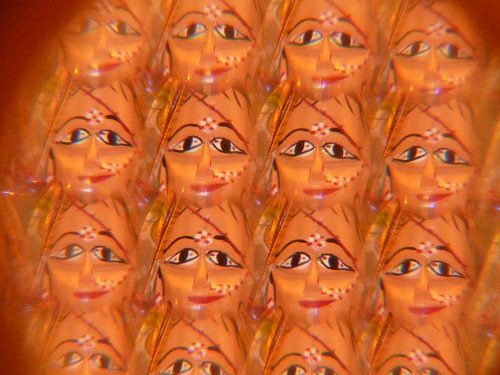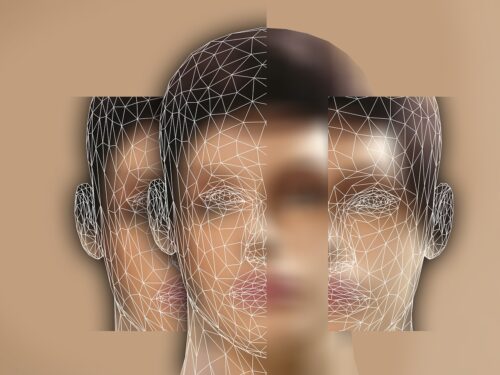Why is it important to know the types of personality disorders? What are those? While face reading was predominantly explored during the 1930s, personality disorders were not widely accepted as a discipline. However, practitioners who have mastered it offered important insights for developing additional personality disorder cluster theories. Among the existing methods is physiognomy. Physiognomy examines facial expressions to determine the character and identify many symptoms.

It is similar to morphopsychology, the study of human facial features and compositions.
Experts at the American Psychiatric Association and National Comorbidity Survey Replication explain that each individual has a unique physical appearance, characteristics, and personality traits during early adulthood. Your genetic makeup determines some parts of your clingy behavior from the beginning. As you grow up, various risk factors easily influence your behavior development. All of these factors can also contribute to the development of one personality disorder as well as other mental illnesses. Read on to learn what personality disorders are and how counseling can help a person understand the condition better.
What Are Personality Disorders?
Personality refers to an individual’s unique patterns of feeling, behaving, and magical thinking. Environmental and social experiences and inherited characteristics influence obsessive-compulsive personality disorder. Throughout a person’s lifetime, their behavior usually stays over time and their family members may not even notice it.
Personality disorders are maladaptive ways of behaving, thinking, and feeling. Behavioral dysfunctions are long-term behavioral patterns and experiences that significantly differ from societal expectations. Individuals with personality disorders deviate from the cultural norm. A behavior dysfunction may cause distress and significant problems in social functioning, which can last over time. When left unmanaged, a behavior dysfunction may significantly impair the behavioral responses of a person.
Can Greatly Affect:
- Emotional response
- Self-confidence
- Ability to relate to other people
- Thoughts about oneself or other people
- Ability to control one’s overall behavior

According to an expert on research advancements, to be diagnosed with behavioral dysfunction, an individual must display patterns of the behavioral characteristics of that particular condition. This characterization must be consistent throughout a person’s lifetime. These behavioral traits can also indicate intense emotions and pervasive distrust from specific stressors or issues. This is what differentiates behavioral dysfunctions from anxiety disorders and mood disorders.
The Unique Feature Of DSM:
(DSM IV Personality Disorders)
TYPE A
Odd and eccentric personality features characterize this cluster.
SCHIZOTYPAL
People with specific personality disorders have distorted and eccentric behavior. This also translates to their way of beliefs and way of thinking. Additionally, they also have a pattern of being very uncomfortable in close relationships as a symptom.
SCHIZOID
A person with a schizoid personality disorder detaches from his or her personal relationships. They also have little emotional expression. With this, they may deliberately choose to be alone and not engage with other people.
Schizotypal personality disorder, on the other hand, is characterized by eccentric behavior, unusual beliefs, and difficulty forming close relationships.
PARANOID
Individuals with paranoid personality disorders are always suspicious of others. They perceive other people as deceitful, spiteful, and harmful to them. This is why they may find it difficult to be close to others, hence displaying antisocial disorders as well.

CLUSTER B
Dramatic, erratic, and extremely emotional behaviors characterize this cluster.
HISTRIONIC
A person with a histrionic personality disorder has patterns of excessive emotion. They also have extreme attention-seeking behavior. So they can be very uncomfortable if they are not the center of attention.
ANTISOCIAL
Individuals with an antisocial personality disorder may seem to have little regard for other people’s welfare. They lack the empathy to relate to other people. Popular media portrays people with antisocial personality disorder as sociopaths or psychopaths. However, this condition does not necessarily lead to violent tendencies.
NARCISSISTIC
According to the diagnostic and statistical manual, individuals diagnosed with narcissistic personality have a high need for admiration. They have a grandiose sense of their importance and entitlement. Narcissistic people may lack empathy towards others, develop extreme sensitivity and distorted thinking or eccentric thinking, violate social norms and social institutions, and prefer social isolation over social situations.
BORDERLINE
People with borderline personality disorder have patterns of being unstable in interpersonal relationships. Abandonment preoccupies them, making them impulsive and reactive at times. They regularly misinterpret innocent remarks. They care more about self-image and self-care.
Three Clusters Of Personality Disorders
Being anxious or having intense fear are qualities of personality that characterize this cluster.
- Obsessive-Compulsive Disorder – A person who has OCD or obsessive-compulsive personality disorder has a pattern of being preoccupied with perfection. They may have an unhealthy obsession with orderliness and control. This behavior will disrupt their time for leisure, relationships, or themselves.
- Dependent –Individuals with this condition are submissive and dependent on others. They have long-term patterns of needing overly cared for in every new relationship. With this, they have difficulties in decision-making without assurance from others.
- Avoidant – Clinically, people with avoidant personality disorder have a pattern of extreme shyness and ongoing feelings of inadequacy. They may also be overly sensitive toward criticism.
Counseling
Counseling primarily helps in diagnosing behavioral disorders and identifying symptoms. After diagnosing, they will devise a treatment plan. Psychotherapy is an effective method for treating personality disorders. So is dialectical behavior therapy.
Counselors will provide them with coping strategies to deal with the difficulties due to their condition.
Most importantly, counseling can help them address the stigma toward their personality disorders. An individual with a personality disorder requires a consultation with a professional that caters to mental disorders stigma. The counselor should reassure them that there is nothing wrong with getting mental health professional help for personality disorders or any mental disorder, even multiple personality disorder.

Conclusion
Counseling can help an individual recognize how to manage and treat most personality disorders. It is helpful to both the patient and the people around them. In the long run, counseling can help patients live life as normally as possible.
Frequently Asked Questions
What Is The Most Painful Mental Illness?
The perception of the most painful mental illness can vary from person to person. Conditions like severe depression, bipolar disorder, and borderline personality disorder can be associated with intense emotional distress.
What Are The 7 Main Mental Illnesses?
The seven main mental illnesses often referred to as the “common mental disorders” include depression, anxiety disorders, bipolar disorder, schizophrenia, eating disorders, post-traumatic stress disorder (PTSD), and obsessive-compulsive disorder (OCD).
What Is Toxic Behavioral Dysfunction?
“Toxic behavioral dysfunction” is not recognized in psychology or psychiatry. It may refer to unhealthy or harmful behavior patterns but is not a formal diagnosis.
What Are The 7 Personality Disorders?
The DSM-5 lists ten personality disorders, including borderline personality disorder, narcissistic personality disorder, antisocial personality disorder, and histrionic personality disorder.
What Is The Most Serious Behavioral Dysfunction?
The seriousness of a behavioral dysfunction depends on various factors, including the individual’s specific condition and its impact on their life. Disorders like antisocial personality disorder and borderline personality disorder can be particularly challenging.
How Do You Know If Someone Has A Behavioral Dysfunction?
Recognizing a behavioral dysfunction involves observing persistent and disruptive patterns of behavior that deviate significantly from societal norms. A mental health professional can provide an accurate diagnosis.
What Is The Most Popular Behavioral Dysfunction?
There isn’t a “popular” behavioral dysfunction, but some common ones include depression, anxiety disorders, and substance use disorders.
What Are The First Signs Of A Personality Disorder?
The first signs of a personality disorder may include difficulty forming stable relationships, persistent mood swings, impulsivity, and a pattern of behavior that causes distress or conflicts with others.
What Triggers A Personality Disorder?
Genetic, environmental, and psychological factors influence the development of a personality disorder. Early life experiences and genetic predispositions can play a role.
At What Age Does A Personality Disorder Develop?
Personality disorders typically start to manifest in late adolescence or early adulthood. However, the exact age of onset can vary depending on the specific disorder and individual circumstances.
What Is The DSM-5 List Of Personality Disorders?
The DSM-5 lists ten personality disorders, including borderline, narcissistic, antisocial, histrionic, and avoidant personality disorders.
Which Disorder Is The Most Common Personality Disorder?
A borderline personality disorder is often considered one of the more common personality disorders, but prevalence rates can vary depending on the population and region.
How Are Personality Disorders Grouped In The DSM-5?
Personality disorders are grouped into three clusters in the DSM-5: Cluster A (odd or eccentric disorders), Cluster B (dramatic, emotional, or erratic disorders), and Cluster C (anxious or fearful disorders).